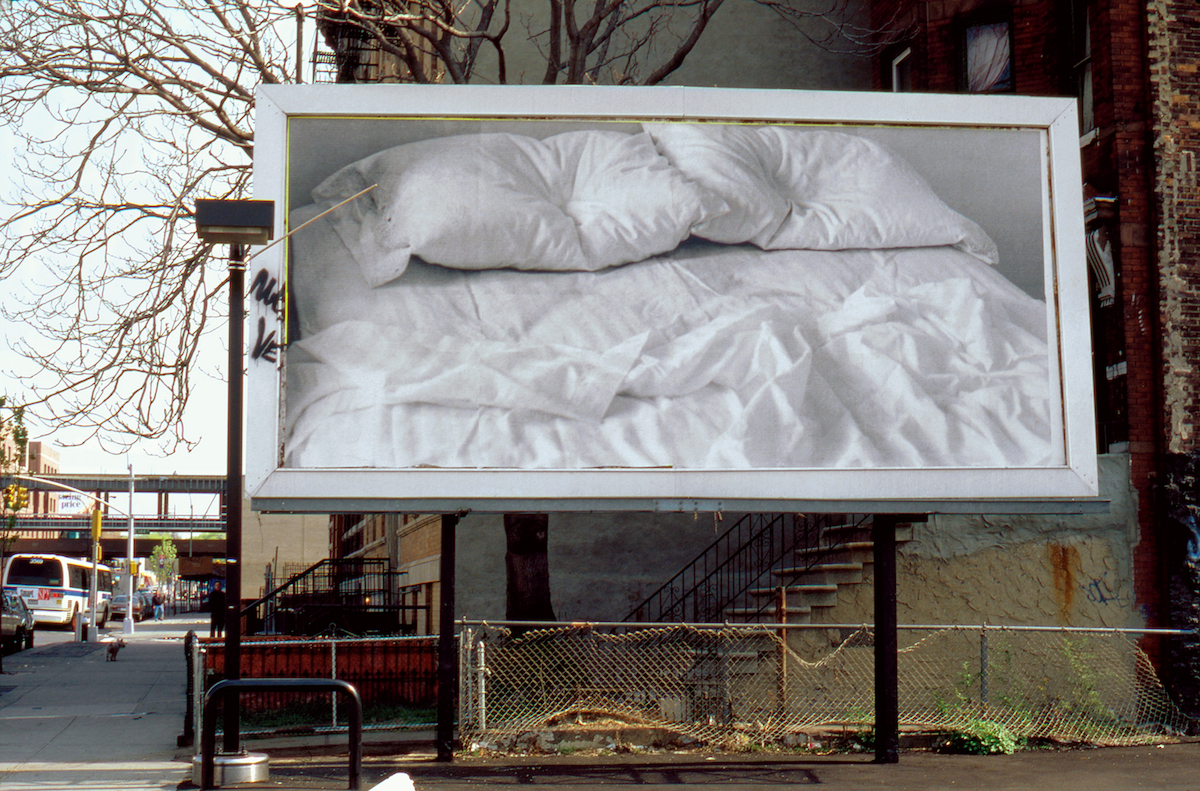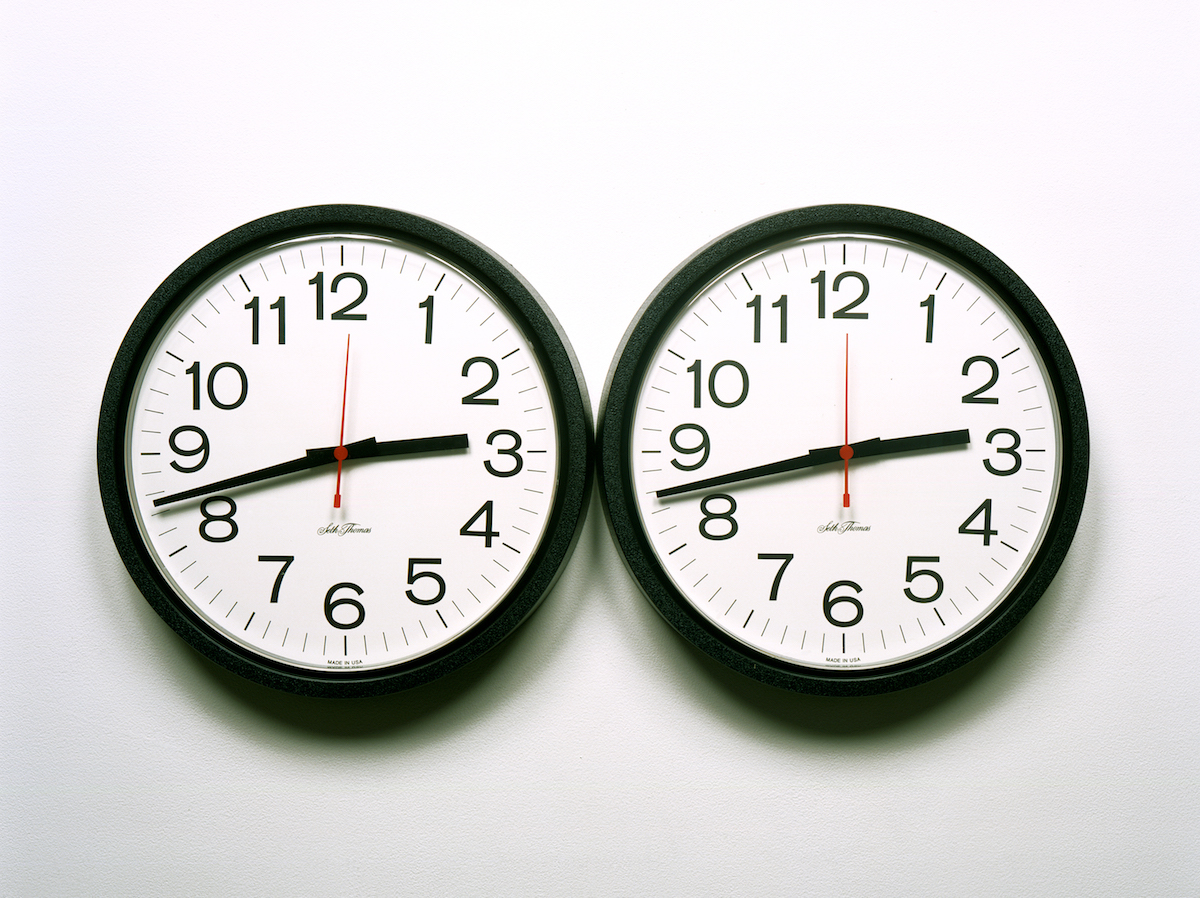
“Untitled”, 1991
Billboard
© The Felix Gonzalez-Torres Foundation
Dear Felix,
The new year has just begun. Days, years roll one after the other, and I am—we are—still here, questioning and pondering, while the time keeps scratching the skin, gently but relentlessly. You said not to be afraid of time, because we all are a product of it—individual souls that might synchronize, in a certain space, at a certain time. I never met you, but feel like I did. You know those blurry dreams, images in slow motion; a golden curtain, a blue mirror, a bird gliding through the sky? I feel like I saw you there, in the cerebral universe of my imagination, moulded and constantly reshaped by your works.
Memories are sticky. They cling to the perimeter of our mind and turn brownish, like old polaroids. Your memories are pictures, broken up into little pieces: tiny jigsaws (the reflection of the landscape on a lake, two racoons on a tree, fragments of love letters, the ocean) wrapped in plastic bags. The past collected, anatomized and then put together again. The past dried out, vacuum-sealed.
You can preserve what is gone, in some way, through remembrance, through art. But still, loss remains. And absence, the outcome of loss, is an all-consuming, paralysing presence. How can reason explain the loss of a lifetime partner? How can language even describe it? Ross is dead, a matter of fact. What it meant to you, though, can’t be said through words and punctuation.
“Grief has no distance,” Joan Didion wrote. It has no geographic coordinates, no definite time zones. It is total, a whole; yet unmeasurable, not topographically detectable. Grief is a subtraction as well as an addition (the world minus you plus the memory of you, everywhere). Anytime I take and unwrap one of your candies, I think of Ross; I consume him, exhaust him, deplete him, and in doing so I accelerate his death. But a pile of candies, which weigh the same as him, can easily be replenished. Collapse and rebirth. Death and regeneration.
A billboard with an unmade, empty bed, all over New York City. You made it after Ross’s death. Two pillows, bearing the marks of your heads; immaculate bedsheets—clinical, aseptic whiteness. Was that Ross’s deathbed? You multiplied it, spread it all around the city streets, announcing how incalculable your loss was. Although this picture can intimately speak to all of us, you said that your public was only one person, your long-time companion. A post-mortem declaration of love.
You used to make portraits of people using only dates and words. As if one’s life could be alphanumerically coded—the result of specific events occurred at a specific time (“Hair 1979”, “Indochine 1990”, “Ziggy Stardust 1973”). “We are not what we think we are, but rather a compilation of texts.” How would your own portrait look? Where would you put Ross on your personal timeline? And what else would you include in it (Cuba, Puerto Rico, NYC, Ronald Reagan, the Gulf War, dad’s death, AIDS)?
A double clock, this is the only portrait of you I can think of. A double portrait, actually. Of you and Ross—perfectly synchronized, now and forever.
Yours,
Federico
The works mentioned in the text are:
“Untitled” (Golden), 1995
“Untitled” (Fear), 1992
“Untitled”, 1995
“Untitled” (Wawannaisa), 1991
“Untitled” (Vancouver), 1991
“Untitled” (Last Letter), 1991
“Untitled” (1987), 1991
“Untitled” (Portrait of Ross in L.A.), 1991
“Untitled”, 1991
“Untitled” (Portrait of Julie Ault), 1991
“Untitled” (Perfect Lovers), 1987-90

“Untitled” (Perfect Lovers), 1987-1990
Wall clocks © The Felix Gonzalez-Torres Foundation, images courtesy of Andrea Rosen Gallery, New York





